UTDlink is an app created over the course of a semester for a design research methods course at UTD. The app aims to aid students in joining and creating student groups, finding events on campus, and connecting with their peers.
The Problem
Many UTD students have difficulty socializing, finding student organizations, and attending school events.
Empathize
Our group conducted research in order to correctly identify the social issues UTD students face. We began by conducting secondary research, which pointed to various mental challenges students may face and how peer-to-peer support groups could help them.
However, this secondary research only gave us a broad understanding of college student issues. To understand what affects UTD students in particular, we observed students on campus and conducted personal interviews.



During this phase, we found that UTD students often feel disconnected from their peers and the campus community. We noted that students are also, more often than not, alone when studying or roaming campus.
Using our combined research, we created a design persona to help us empathize with our users. Eugene Green is an ATEC student who is looking to get involved in campus activities but doesn't know where to begin.
To further empathize with Eugene and in turn the UTD student body, our group then created a user journey.

Ideate
Our group came together to build a list of features that could help students connect with their peers on campus. For feedback, we sent out a survey to ask students which they thought would be most useful.

Our top 6 features, based on student ratings
Based on a rating scale of 1-5, students ranked our proposed features. Above are our most highly ranked features that would be included in our app.
Features with low ratings were excluded from further iteration
Prototype
Our group created paper prototypes after conducting drafting exercises. These prototypes were later used for Usability testing to ensure that the user would be able to navigate our potential screens.
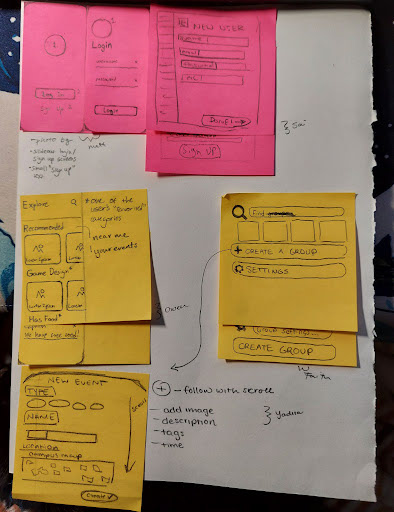

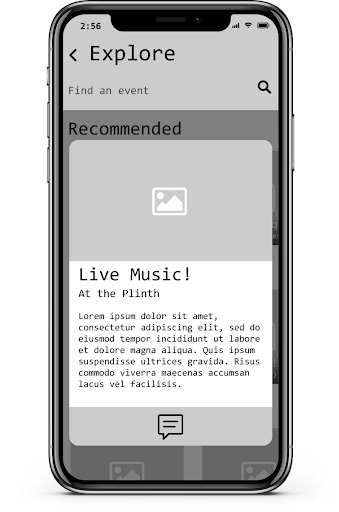
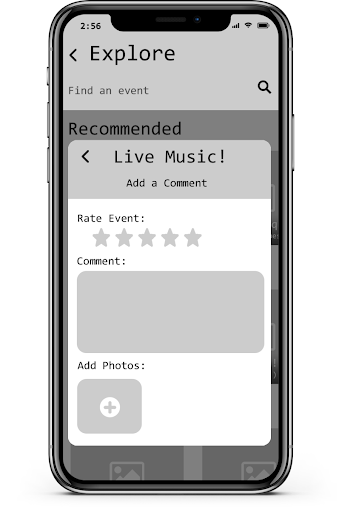


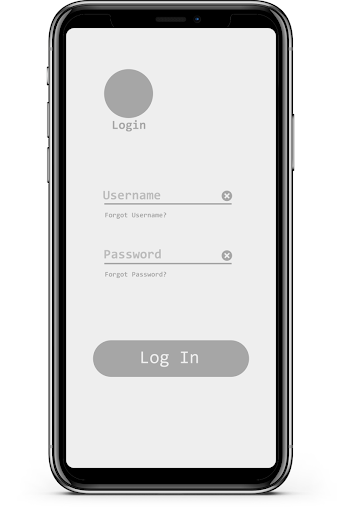

Our Solution: UTDlink
UTDlink makes it easier to find and create social events on campus by creating a single hub for students to access. Our app features a personalized explore page of events where students can find events that may interest them.
An explore page is presented to the user after logging in and checking their student credentials. This explore page showcases organizations the student follows, as well as other popular categories of events.
Once a student clicks on an event tile, they are then taken to a description page that further details the event.
On this page, the user can add the event to their calendar, view the location of the event on the map, and favorite the event and event organizers.
Users can use a navigation bar at the bottom of the screen to access different parts of the app including a search bar, an event creator, a calendar, and a campus map.
.

Search page
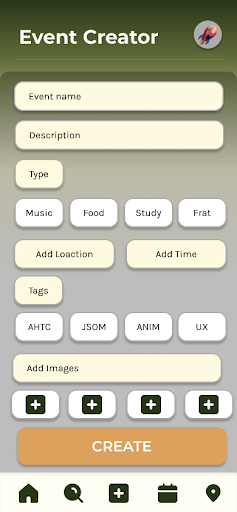
Event creator page

Group creator page
On the search bar page, students can choose to create their own events or groups.
On these creator pages, students are able to add details about their event including tags and photos. Using this feature, students can quickly create events that can be showcased to interested audiences.
On the calender page, students can track their current and upcoming events. This makes it simple for users to manage their time according to their personal schedule.
Users can click on their profile on this page in order to view their favorite events and clubs.
Here, users may also rate past events. These reviews are posted onto organization pages for other students to view.
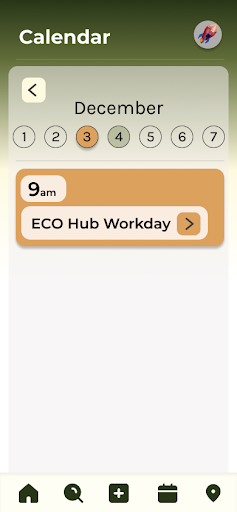

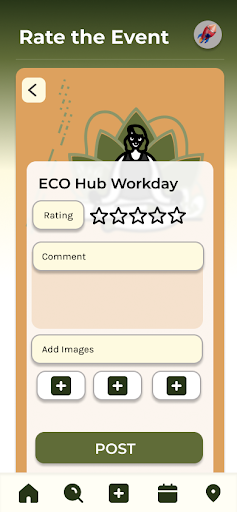
Finally, students can keep track of where their events take place by navigating to the app's built-in campus map.
UTDlink successfully allows students to become more active in on-campus events by providing user with key features such as an event creator and a personalized explore page. Ratings of events encourage participation from students who may be wary of social events, and organizational features such as a calender and campus map allow for students to plan their time accordingly.







